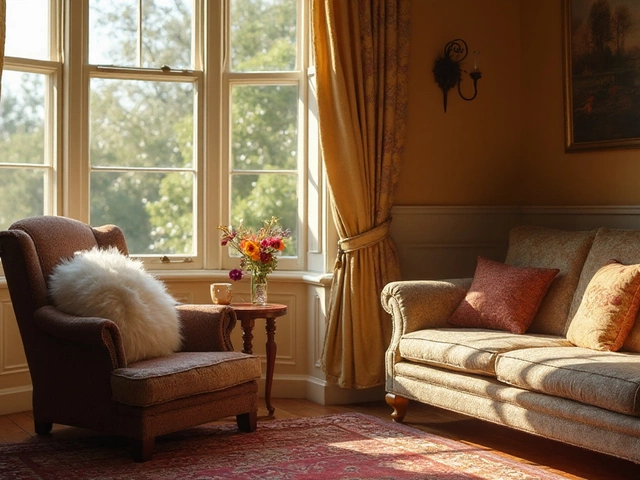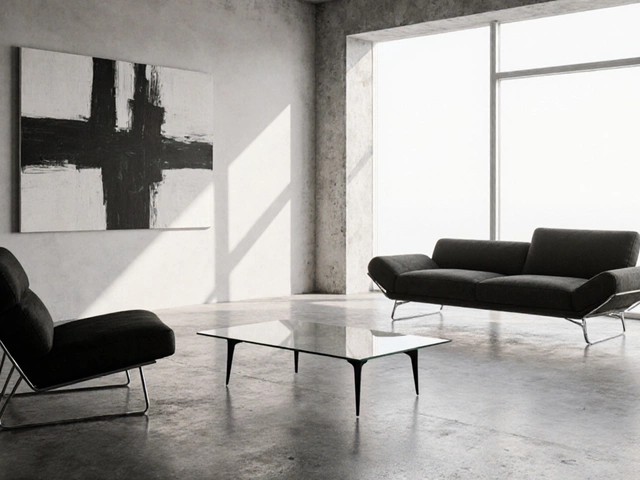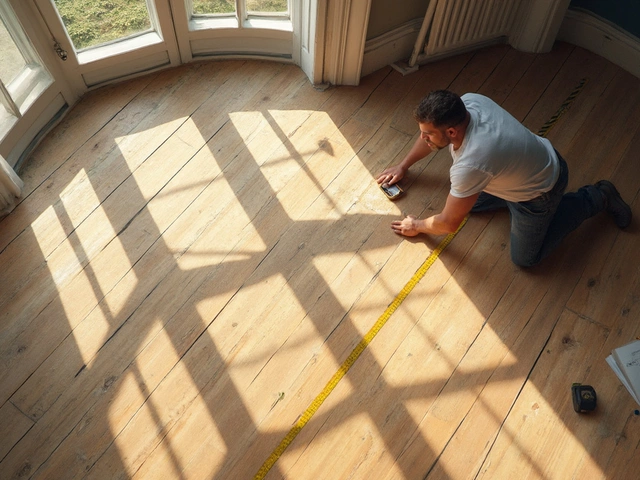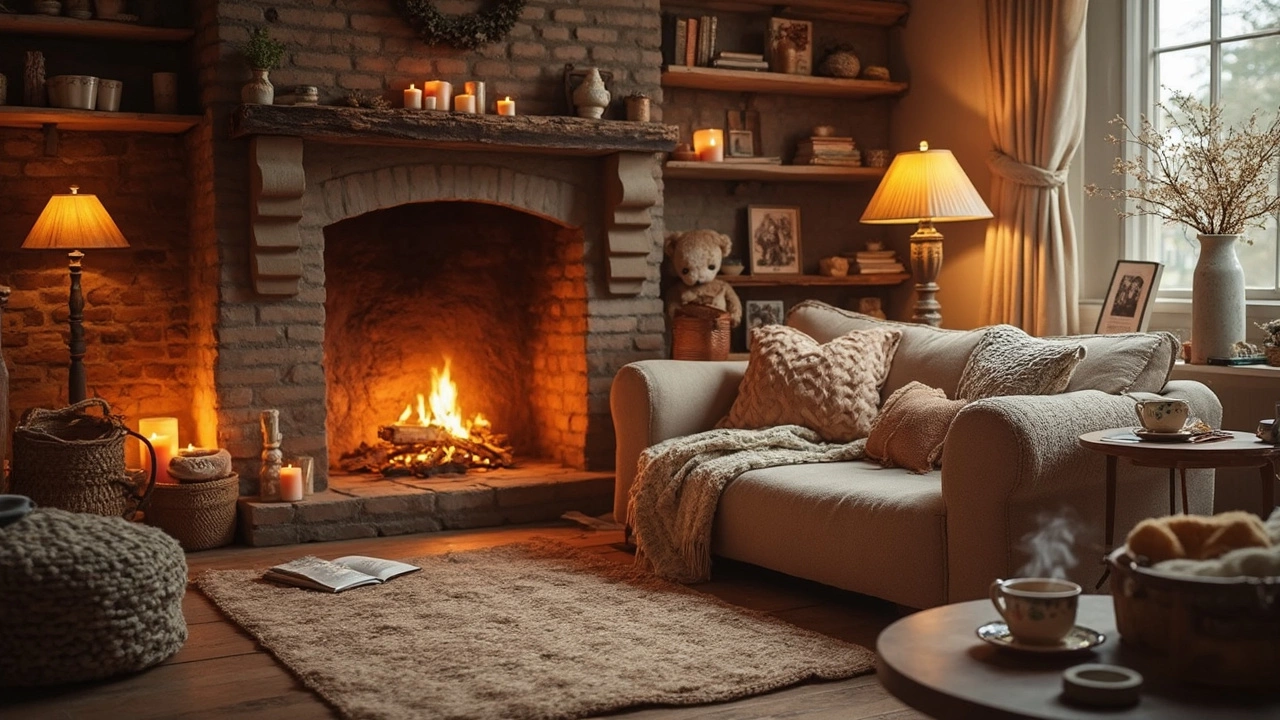
If you've ever walked into a space and immediately felt at home, you've probably encountered the magic of hygge. This Danish lifestyle concept isn't just about interiors; it’s about creating a mood of coziness and contentment. In a world that's often chaotic, hygge brings peace with simple design choices.
At its core, hygge is all about comfort. Think soft, plush textiles, gentle lighting, and a clutter-free environment. It's the kind of design where every piece serves a purpose, either functional or emotional. You might find yourself sinking into a cushion-laden couch or wrapped in a warm, knitted throw, and that's precisely the point. It’s about enjoying life’s simple pleasures.
Want to bring a bit of hygge into your home? Start with lighting. Go for lamps that offer a warm glow, rather than harsh overhead lights. Candles are a hygge staple too. Their flickering flame not only provides light but also adds a calming ambiance to any room. But remember, hygge doesn't mean tossing everything you own – it's about thoughtful choices that make a space feel inviting.
- Understanding Hygge
- Key Elements of Hygge Design
- Creating a Cozy Atmosphere
- Practical Tips for Your Home
Understanding Hygge
Ever heard of hygge? It’s a word that's tricky to pronounce—it's something like 'hoo-gah'—but easy to embrace once you get the hang of it. Originally from Denmark, which many people know as one of the happiest places on Earth, hygge is all about capturing a feeling of cozy contentment and well-being. It's not just about what your home looks like; it’s about how it makes you feel.
So, what makes hygge so special in interior design? It focuses on simplicity and comfort. Imagine sipping hot cocoa by the fire, surrounded by soft lighting and natural textures. That's hygge in a nutshell. It’s intangible but incredibly effective in transforming homes into soothing retreats.
Hygge's Deep Roots
Hygge isn't a new concept. It dates back to the 18th century! In Denmark, it has long been part of everyday life. During long, dark winters, Danes found comfort and joy in creating warm, inviting spaces. By embracing natural elements like wood, wool, and plants, they brought the outside in—a perfect modern interiors trick to learn from.
The Hygge Lifestyle
It's essential to understand that hygge is more than just a design style; it’s a lifestyle. It encourages simplicity—getting rid of clutter and focusing on items that add meaningful value to your life. Hygge celebrates the little things, like enjoying a quiet evening with good company or relishing a warm blanket on a cold day.
- Opt for neutral color palettes that calm the mind.
- Layer textures like wool, cotton, and wood for warmth and interest.
- Create small comfort zones in each room. Picture a soft chair in a sunny nook, perfect for reading.
- Include personal touches like family photos or handmade crafts that tell your unique story.
The magic of hygge is its ability to transform your living space into a sanctuary, ready to weather both literal and metaphorical storms, making every moment at home a bit more special.
Key Elements of Hygge Design
When it comes to mastering hygge in your home interior, it's all about embracing simplicity and comfort. One key element is the use of natural materials. Think woods, wool, and leather. These materials not only add warmth but also texture, making spaces feel inviting and alive.
Lighting
Let's talk about lighting, a cornerstone of hygge design. You want to aim for a soft, ambient glow. This can be achieved through strategically placed lamps, fairy lights, and of course, candles. The flickering of a candle is not just light—it's an experience, a moment of calm amid daily chaos.Colors and Textures
The color palette in a hygge-inspired room tends to be muted and earthy. Think whites, soft grays, and natural greens. These colors create a soothing backdrop that lets furniture and accessories shine. Pair these with warm textures—like chunky knit blankets or plush throws—to intensify the inviting feel.Decluttered Spaces
A clutter-free zone is essential for hygge. It doesn’t mean stripping down everything but rather choosing pieces that matter. Every item should have a purpose, contributing to the overall comfort and ease of the environment. It’s about making room for what truly brings joy.Bringing the Outdoors In
Hygge spaces often feature elements of nature. Incorporate plants, dried flowers or branches, and maybe even a small indoor herb garden. These bring a bit of the natural world inside, creating a seamless blend between the outdoors and your hygge haven.Statistics show that 83% of people feel less stressed in rooms filled with natural elements and soft lighting. So why not give it a try in your home? By focusing on these key elements, you're on your way to crafting a space that’s not just physically comforting but emotionally too.
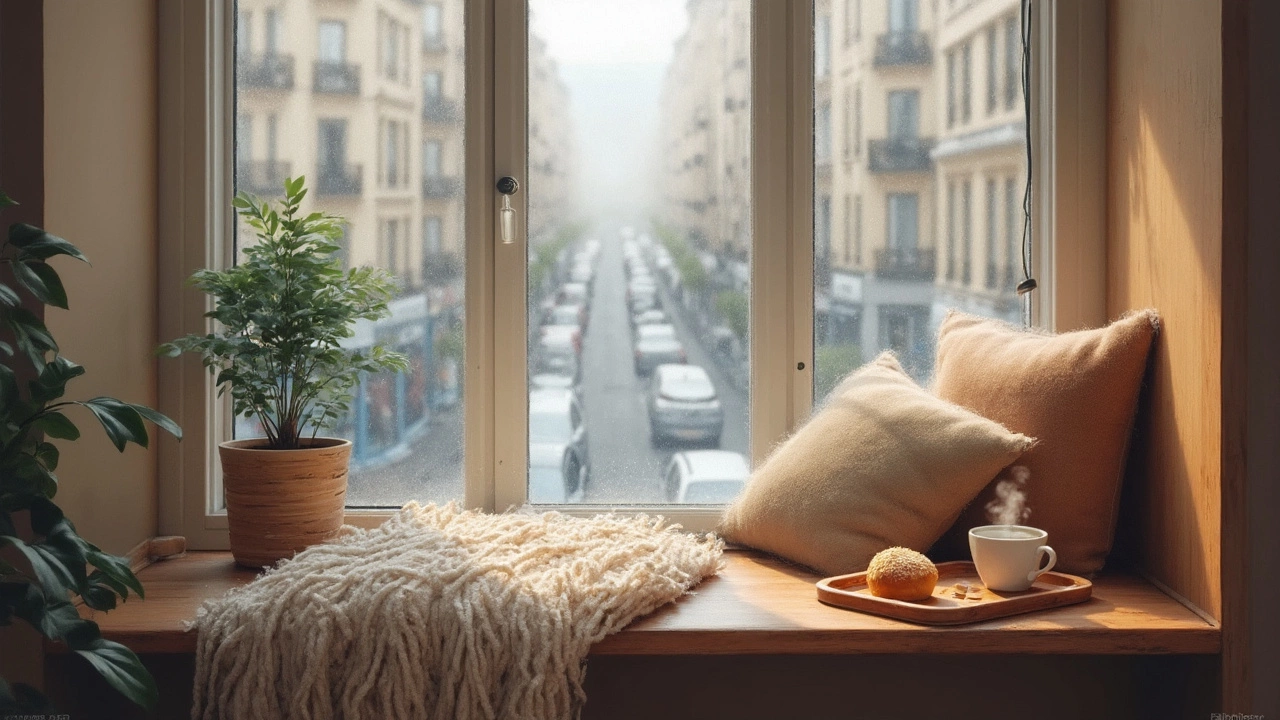
Creating a Cozy Atmosphere
When we talk about hygge, it's all about feeling snug and stress-free in your own space. A cozy atmosphere isn’t just about what you see, but also what you feel. To achieve this, think of creating a warm embrace for your senses.
Boosting Comfort with Textiles
Textiles play a huge role in turning a house into a home. Load up on soft throws, cushions, and rugs. Choose materials that invite touch, like wool, cotton, or even cashmere. These textiles should be in neutral or earthy tones, capturing that natural vibe that is central to hygge. Shades of cream, gray, or soft pastels work wonders.
The Power of Scent
Scents can instantly transform the mood of a room. Light subtly scented candles, or use essential oils to create a calming aroma. Popular hygge scents include lavender, vanilla, or pine, which promote relaxation and wellbeing.
Furniture and Layout
Choose furniture that invites you to sit back and relax. Large, deep sofas work well, especially when you add plenty of cushions. Arrange seating to encourage conversation. The layout should be functional yet intimate, where you feel drawn to hang out rather than just pass through.
Include Nature
Bringing the outdoors inside is a key aspect of hygge. Incorporate plants to add life and color. If you don't have a green thumb, opt for greenery that's easy to care for like succulents or snake plants. They’re low maintenance and fit well into the hygge ethos of simplicity.
Lighting it Right
Lighting truly sets the scene. Use soft, adjustable lamps instead of glaring overhead lights. Pick fixtures that cast a warm glow, mimicking natural sunlight. String lights are also a great addition for that extra cozy touch.
Put it all together and your home becomes a haven of comfort. Designing with hygge isn’t about buying new things, but about thoughtfully selecting elements that make life more pleasant.
Practical Tips for Your Home
Bringing the hygge magic into your home is about creating spaces that feel inviting and lived-in. Here are some straightforward, achievable tips to help you embrace cozy home vibes.
1. Layer Textiles
Think about adding layers of softness everywhere. Pile up pillows on your sofas and beds, mix different textures like wool and cotton, and incorporate a throw blanket draped casually over the back of a chair. This not only looks inviting, but it’s also practical for curling up during cooler weather.
2. Light it Right
Lighting is crucial for setting the mood. Avoid bright, stark lighting by opting for floor lamps, table lamps, and candles. A dimmer switch is a great investment for achieving just the right level of light at any time. According to Meik Wiking, CEO of the Happiness Research Institute, "Danes use lamps as mood setters and create different pools of light for a cozy atmosphere."
3. Declutter
A cluttered space can be stressful and anything but cozy. Keep your home tidy by organizing and only keeping items that are meaningful or serve a purpose. Use storage baskets to keep things neat yet accessible.
4. Natural Elements
Bringing bits of the outdoors inside adds another element of warmth. Use wood in furniture or decor, incorporate plants for that touch of green and life, and consider natural fibers for rugs and other furnishings.
5. Comfort Foods
Finally, hygge isn't complete without comfort foods. Think homemade soups and freshly baked bread. It's about enjoying the process, so why not have fun experimenting with recipes that fill your modern home with delicious aromas?
Creating a hygge-inspired interior design doesn’t have to be complex or costly. It's about small, intentional changes that collectively make your space feel like a sanctuary. Ready to get started?
